
Great
2Go
a container system that removes waste but keeps the convenience
——
Project Type
product design
design strategy
Skills
problem framing
secondary research
product requirements doc
brainstorming
sketching
design for manufacturing
prototyping: fusion 360, 3D printing
material selection
storytelling
product pitch
Role
principal designer (solo project)
design research lead
prototyping lead
pitch visual design lead
pitch story design lead
The Challenge
Over 23% of the material that reaches our landfills comes from disposable containers and packaging. When eating out at a restaurant, it is typical to be given one of these disposable containers at the end of a meal.
In a graduate level product design course, I was tasked with discovering and designing for white space in the home-goods market. With a passion for designing for sustainability, I chose to tackle an alternative to the traditional disposable to-go container—specifically targeting my design towards the Zero Waste market (a segment of the population that is adapting their lifestyles to avoid sending anything to the landfill). The result?
A portable, versatile container system that flexes to meet your needs
A snapshot of me pulling a prototype component hot off the 3D printing press!
The Process
I kicked off the product development process with a deep dive into research: conducting user interviews and radical social listening. I discovered that while most product offerings met foundational functional requirements, they required the user to sacrifice convenience. This research led me to the central question for my project:
How might I create a to-go container alternative that removes the waste but keeps as much of the convenience possible?
From this initial research, it became clear that disposable containers aren’t tolerated by Zero Wasters. Because of this, these users often bring their own containers from home; however, these containers are big, bulky, and awkward to transport. Other alternatives were easier to carry, but still large and difficult to stow on the go.
Still others were collapsible and more portable but didn’t allow for food separation and were awkward to port when full. I dug deeper through a competitive analysis, stakeholder research, and journey map to discover that the containers on the market spanned from rigid to versatile and bulky to portable, but none combined versatility and portability. I had found my white space.
A collection of container options currently available to users. Competitive bench- marking was essential to the discovery of white space.
With these insights in mind, I created a product requirements document—considering the unmet needs as well as the who, where, when, and why to prioritize my product features. Using the AEIOU framework and taking inspiration from analogous research, I sketched out an exploration of concepts across collapsibility, modularity, nesting, and stacking.

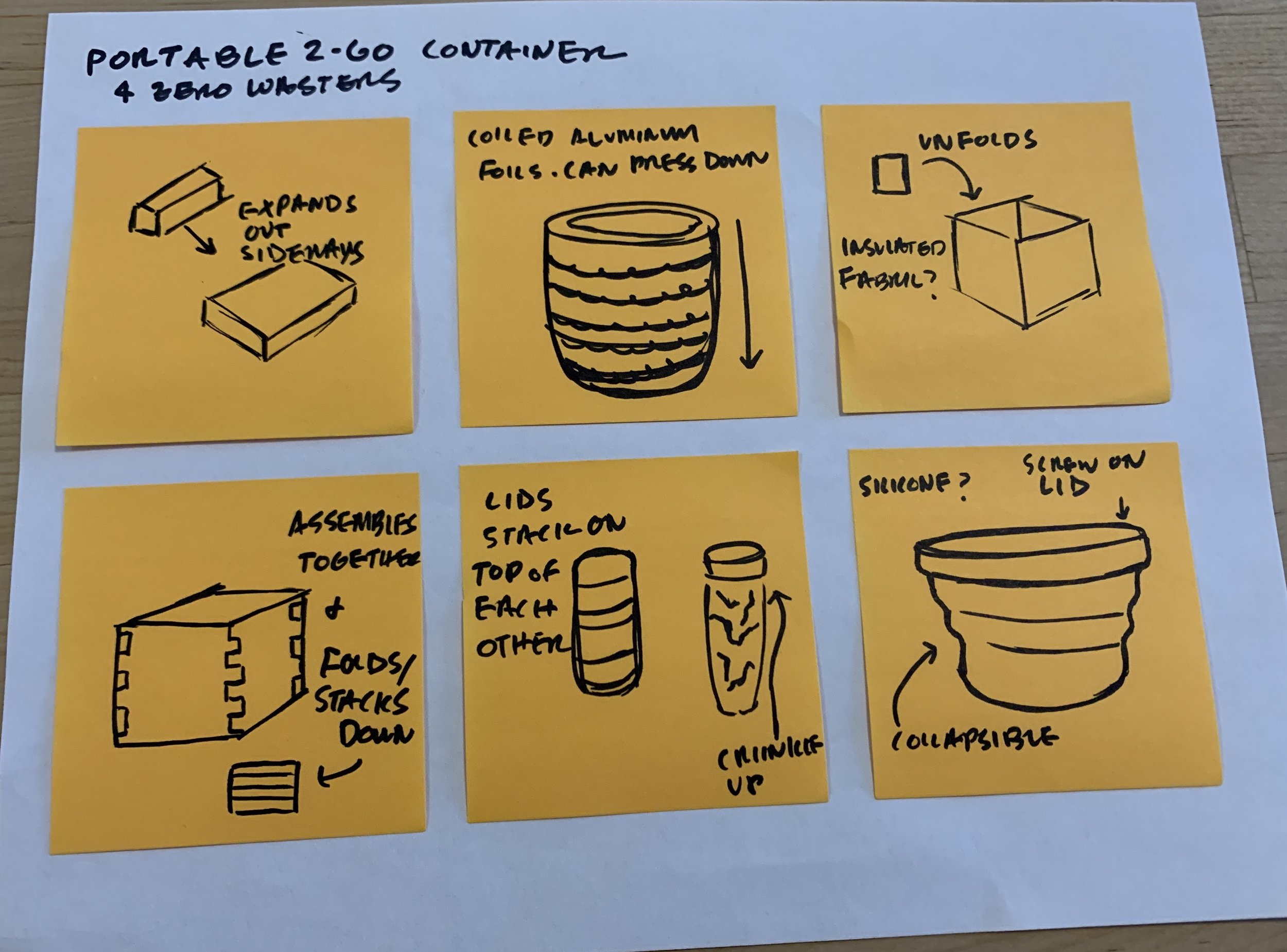
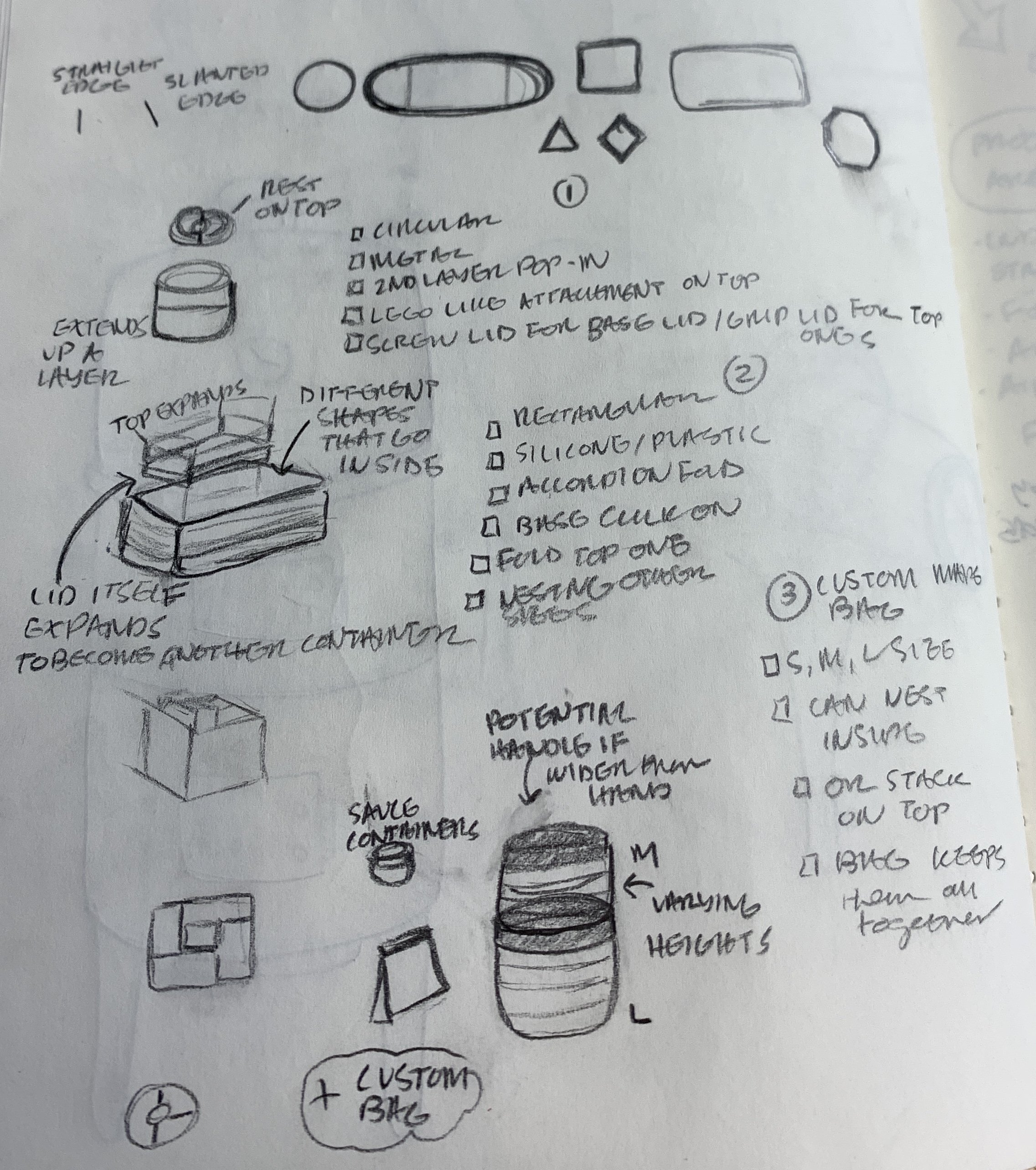


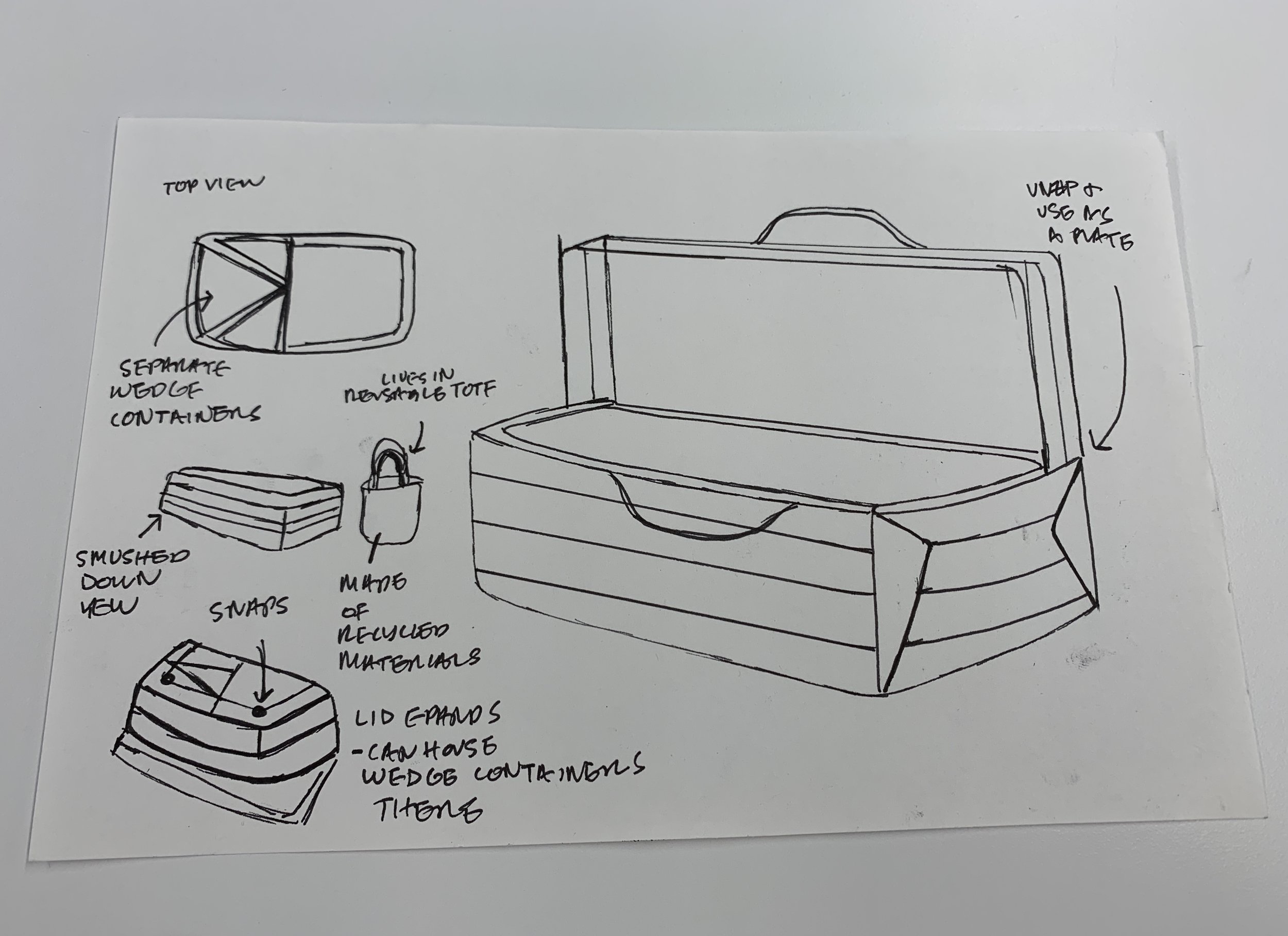



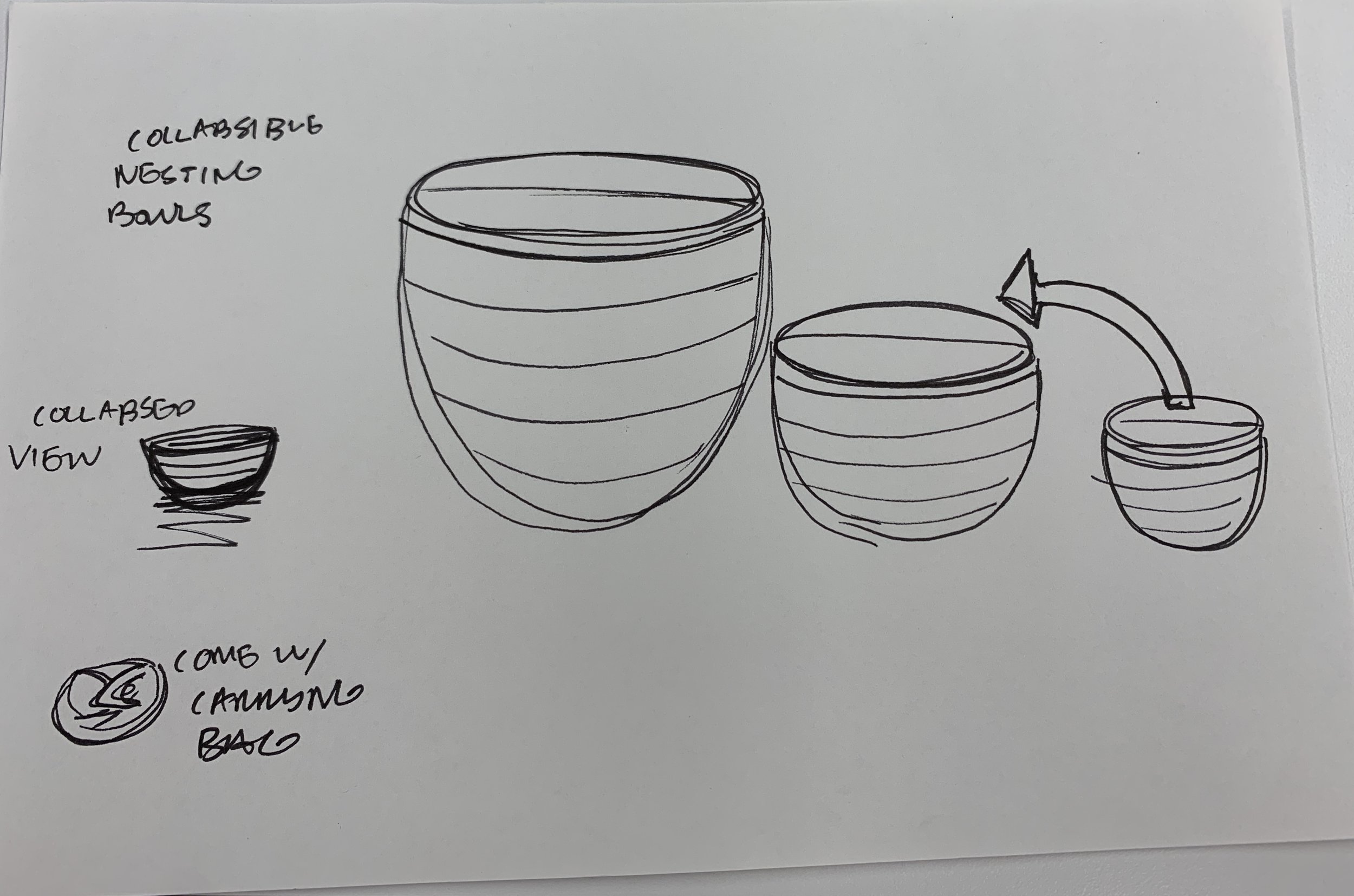
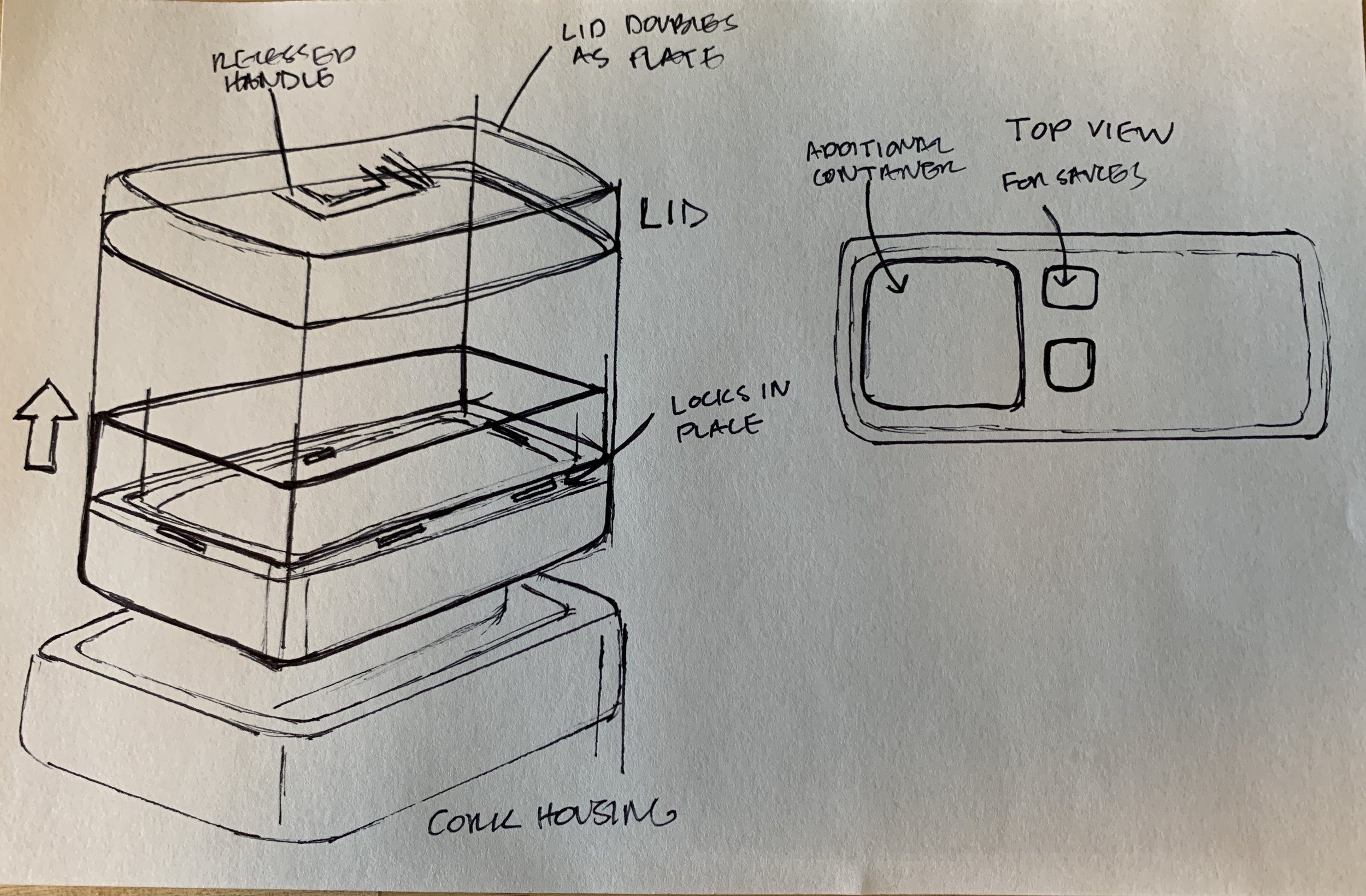
Converging on my existing concepts, I created my first low-fidelity prototype using paper, hot glue, and an existing disposable container to convey a stackable, accordion fold concept.

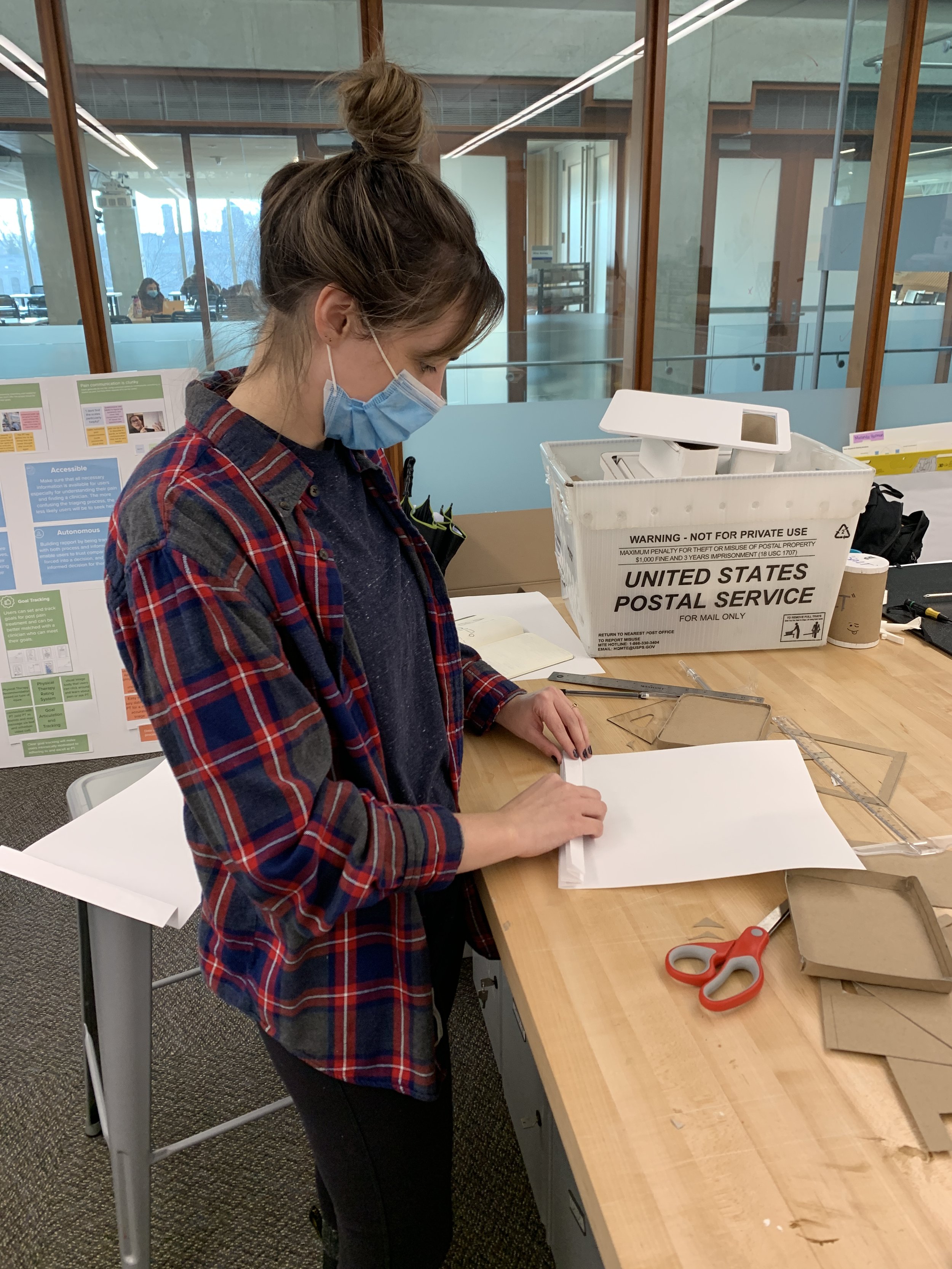

I implemented the feedback I received from prototype testing and pivoted to a circular concept . This allowed me to take advantage of a screw-lid mechanism for confident sealing as well as a stacking capability between containers.
On-the-fly sketch of my final concept . This sketch was used to inform the 3D model.
With the help of a talented engineering peer, I built out a 3D-model of my final concept and created my final prototype using a variety of 3D printers.
The story of a 3D printed protoype.
With final prototype in hand, I compiled my research into a cohesive story for the final product pitch.
Final prototype: the top container shows the connecting threads & the clear, flexible prototype shows material selection (and was made through resin printing- very exciting!)
The Result
After evaluating the material (compostable bioplastic) and manufacturing process, I had the incredible opportunity to pitch The Great 2 Go to a panel of renowned product designers. The Great 2 Go is a versatile container system that comes with two containers + a custom bag. The containers go from flat to expanded to stacked, and the expandable bag can store the containers in any state.
This concept provides the user with ultimate portability but also versatility through food separation and customizable food space. Receiving positive feedback and offers of mentorship for my concept, I am currently in the process of filing for a patent and taking my product to market.
lessons
Sustainable design is critical to the future of design.
Sustainable design also often means pushing the boundaries of what’s thought as possible.
Lean on those with complementary skills to complete your design puzzle.
3D printers often have a mind of their own. You may need to bribe them with lots of attention to complete the job.






